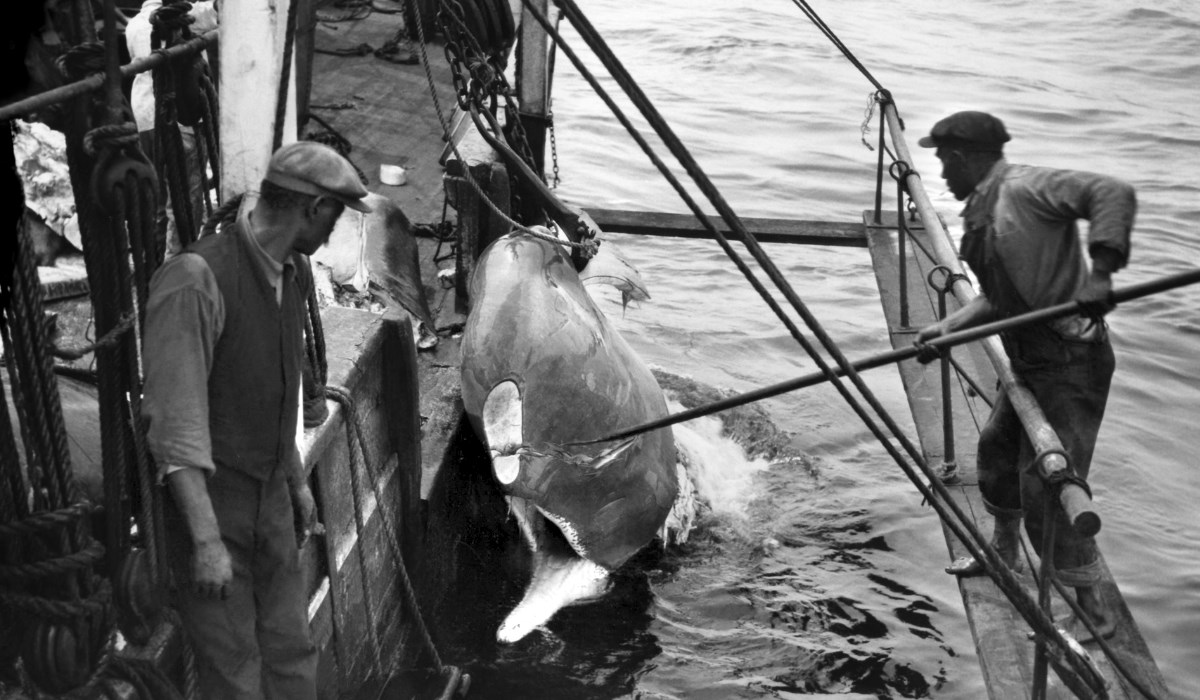
Whale voyages were dirty and dangerous. Injuries and death were not uncommon, and the industry was most kind to ship owners, who took 60-70 percent of the profit. 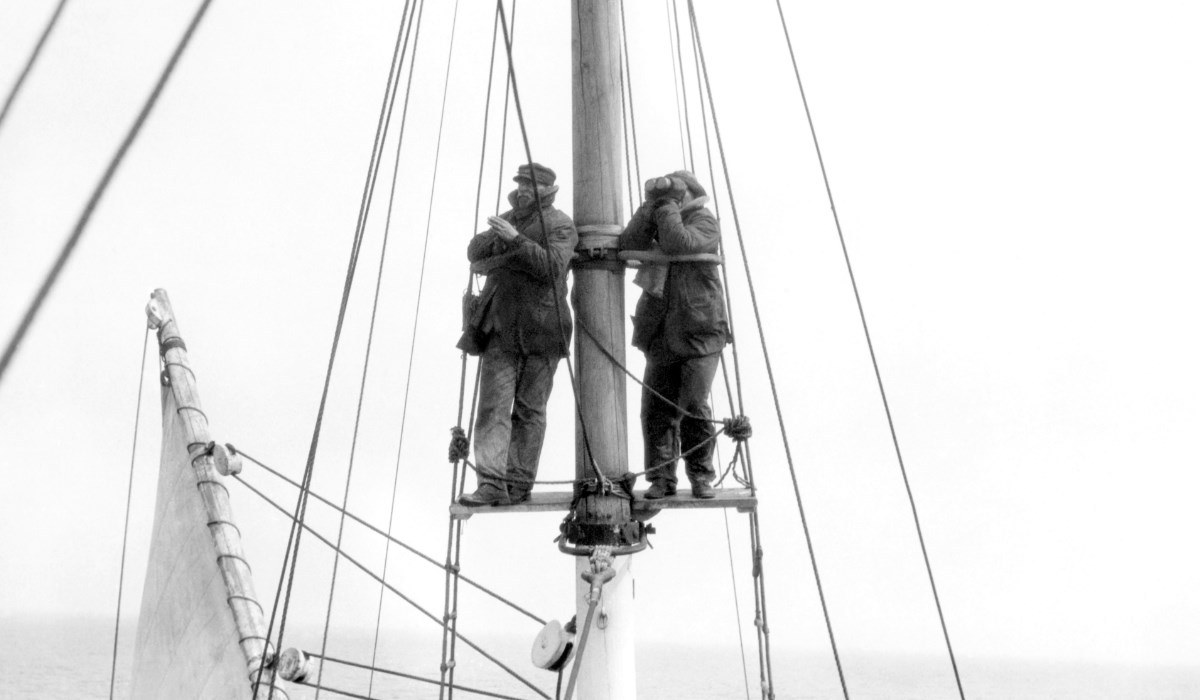
Finding WhalesCrewmen would take turns scanning for whales in two-hour shifts, from sunrise to sunset each day. The whaleman would climb up the mast to the "crow's nest," where he would look for whale tails, the spout, or a vapor plume caused by the whale's breath. Two pieces of lumber and a pair of iron hoops were the lookout's only support as he steadied himself 100 feet above the deck.Under ideal conditions, a lookout might spot a whale eight miles away. It took an experienced seaman to identify the kind of whale it was based on its tail shape, spout location, or size. The lookout would yell out, "There she blows," to alert the rest of the crew. A mate or captain would call back-and-forth with the lookout to determine the whale's location as precisely as possible. Then, the crew would launch the rowboats. Teams of six would row each whaleboat and chase after the whale. The shipkeepers — usually the cooper (who made and repaired casks), the blacksmith, the carpenter, the cook, and the steward — were left behind to handle the ship. 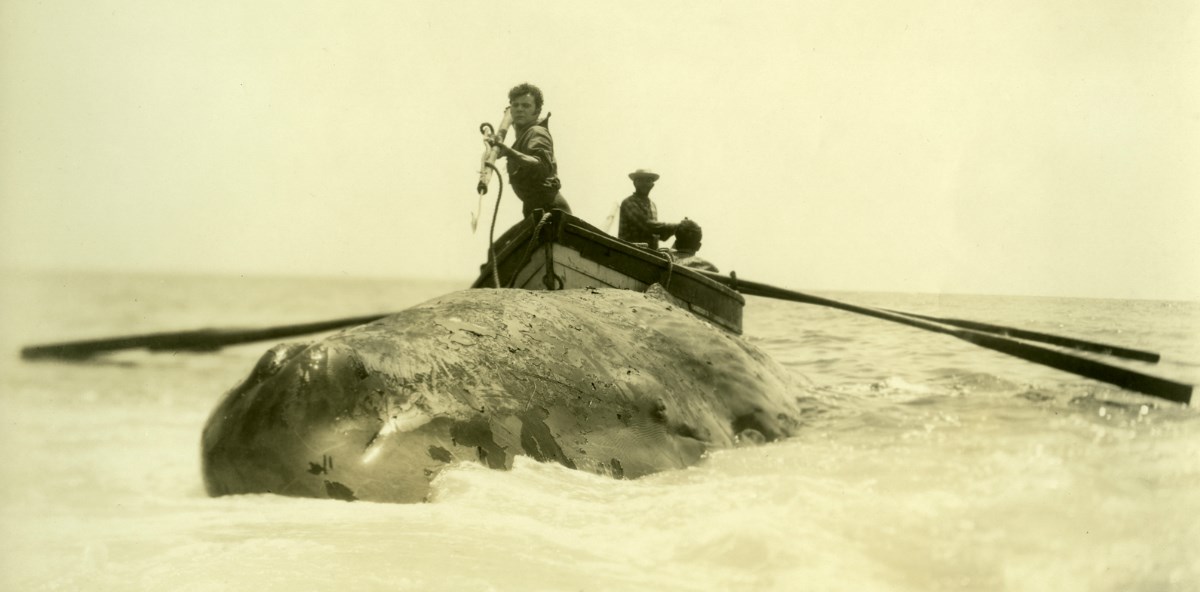
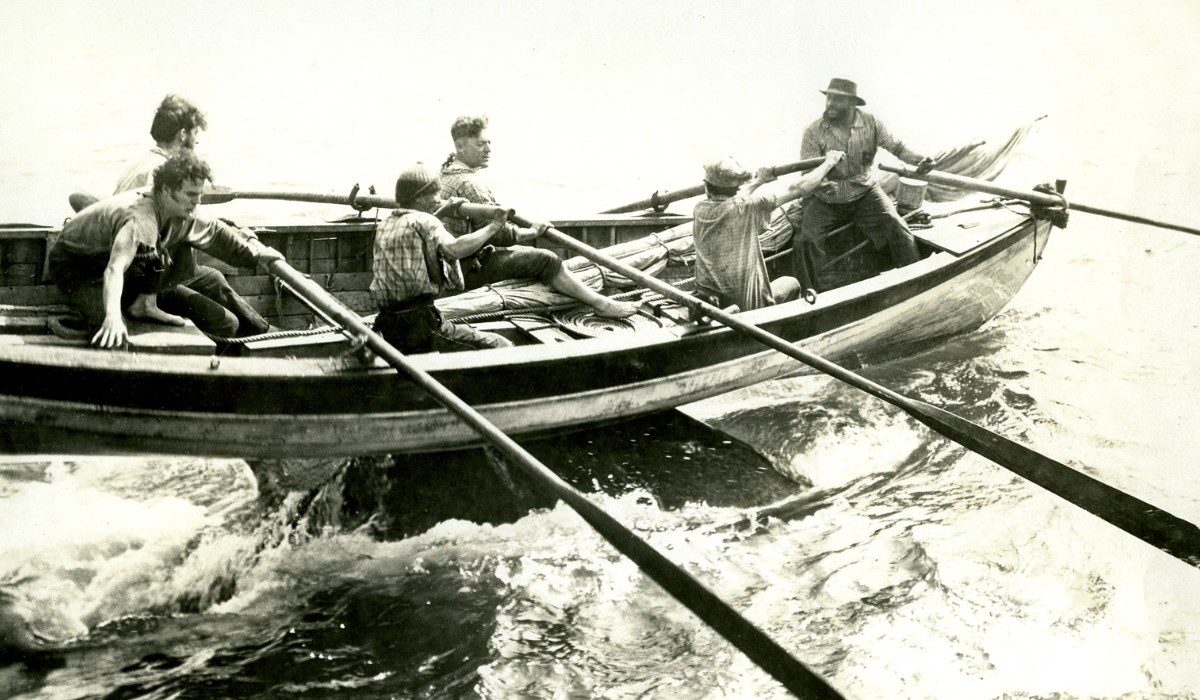
Catching WhalesWhaling was filled with long hours of boredom until the whaleboats were launched and the chase began. The crews raced to reach the whale first, guided by the boatheader (a mate or captain). The men could not simply row fast, however. Whales have acute hearing, so it was important to approach quietly as to not scare them into diving or swimming further away.As the whaleboat neared the whale, the harpooner would step up. The harpoon, known as a "whale iron," would penetrate the whale's blubber and secure the whale to the whaleboat. The harpoon was not designed to kill the whale. For a four-year voyage, a whaleship would carry 150-200 harpoons. In the late 1800s, the standard harpoon was the Temple toggle iron. After the harpooner caught the whale, the creature would either dive, turn on the boat, or take off swimming. A rope attached to the harpoon kept the boat near the thrashing whale. The jaws or tail of a 50-ton whale could smash the boat and send crew tumbling into the water. If the whale dove, the crew would let the line run out so as to not be dragged down with it. A seaman caught in the line could be dragged to his death. If the whale swam away, it would tow the whaleboat behind it. This was called a "Nantucket sleighride." Sperm whales can swim on the surface at more than 20 miles per hour. The crew's goal was to tire out the whale, without being carried too far from the ship and getting lost. When the whale tired, the crew pulled on the line to draw the boat close to their prey. The boatheader carried a lance forward and plunged it into the whale's heart or lungs. With each breath, the whale spouted blood. The end came when the whale beat the water with its tail, shuddered, and turned over on its side. 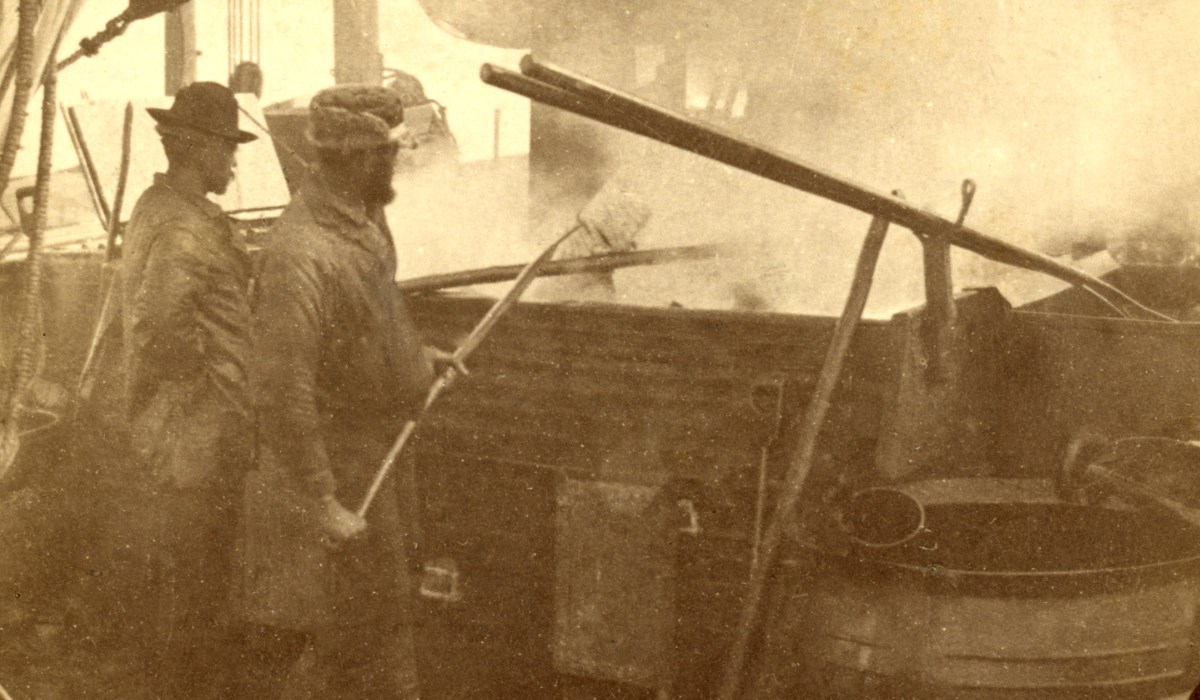
Processing the WhaleNot all pursuits ended in a whale death. Crews sometimes chased for hours and never got close to their prey. Occasionally, the harpoon would shake loose from the whale, or the whaleboat would be overturned.After the hours-long whale hunt, the six-person whaleboat crew still had to tow the 50-ton, dead whale back to the whaleship. If the wind was favorable, the whaleship sailed to where the carcass floated in the sea. Once the crew arrived at the whaleship, the whale would be fastened to the right (starboard) side of the ship with heavy chains. It was important to work fast to prevent sharks from eating too much of the carcass. The crew divided into two watches, each working six-hour shifts day and night until the job was done. The process could take several hours to several days, depending on the size of the whale, the skill of the crew, and the weather. The crew erected the cutting stage — or wooden platforms — above the carcass. Men then stripped off the blubber, or the thick outermost layer of fat, with cutting spades. They'd cut the blubber into strips that weighed about a ton each. On deck, these blankets would be cut into even smaller pieces. The crew then boiled the blubber to extract the oil. This "trying out" process was carried out on shore in early whaling days, but by the mid-19th century, it was done on deck. Big iron pots set in a brick stove, called tryworks, were used to cook the blubber down and extract the oil. The oil would be put in casks and stored in the cargo space at the bottom of the ship. Onshore, it would be strained and bleached, then sold primarily as lamp oil. Other harvested items included spermaceti, ambergris, and baleen. Learn more about harvested items 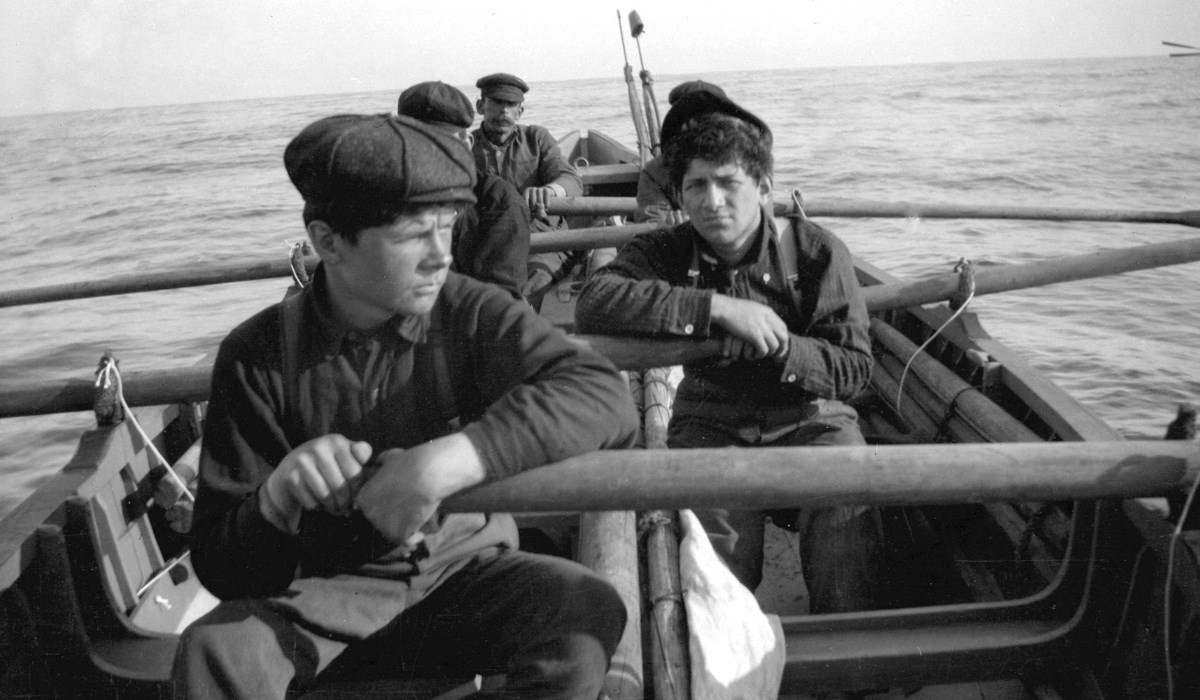
On rare occasions, the fire in the tryworks spread and devastated the ship. And throughout the days and nights of work, an unforgettable stench clung to the men and their ship. After the last cask was stowed in the hold, the crew scrubbed and polished until the ship was as clean as it could be. The odor of smoked blubber was never really gone. It was said that a ship downwind could smell a whaleship coming before spotting it. When the cleanup ended, lookouts were again sent up the mastheads to watch for whales. 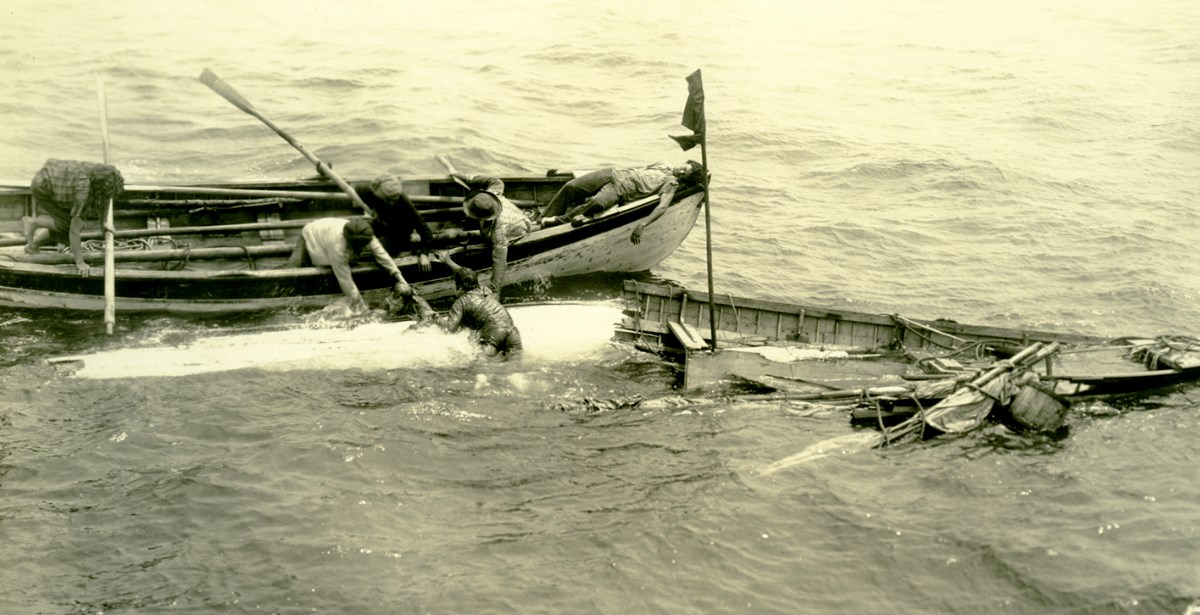
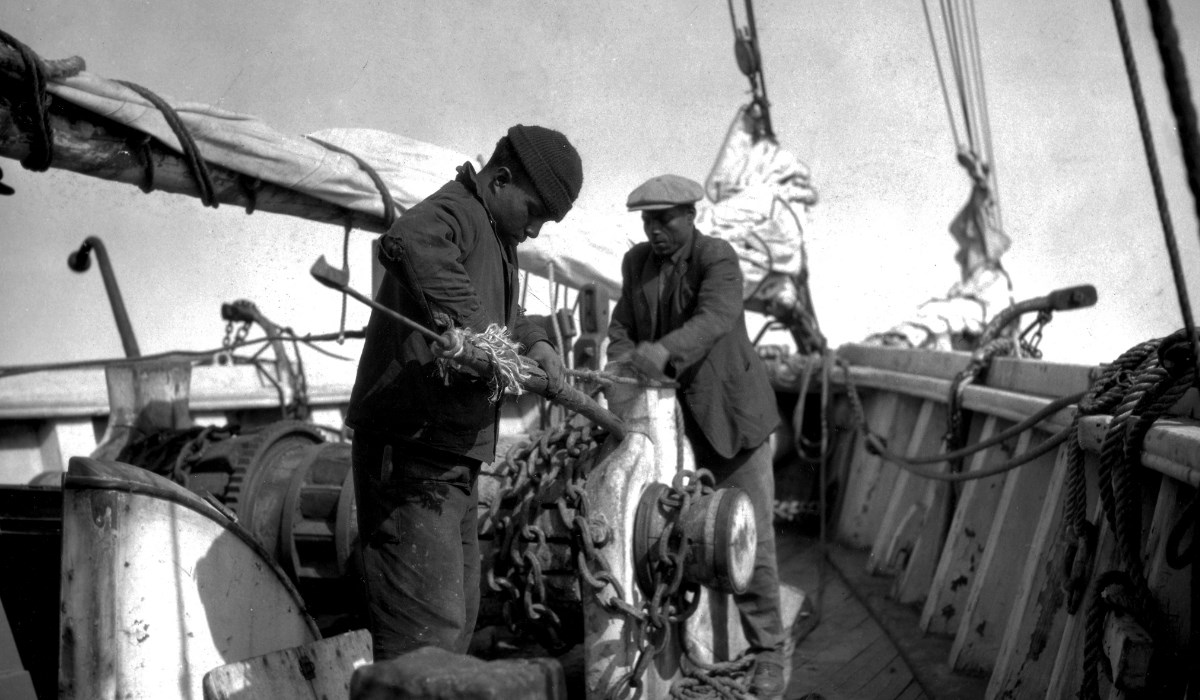
|
Last updated: July 29, 2022
